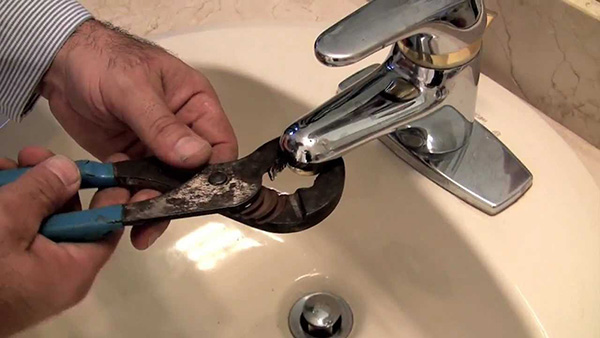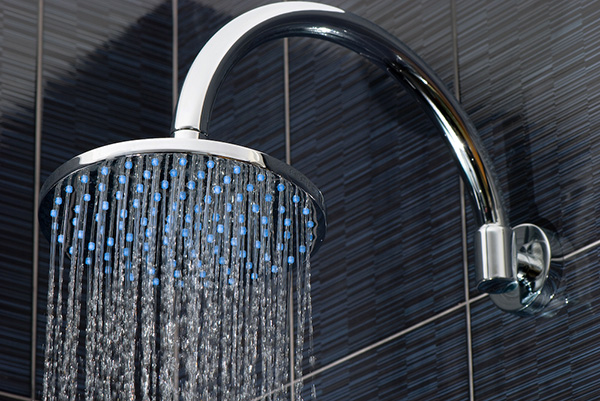Introduction
Low water pressure can be a frustrating issue that affects various aspects of daily life, from showering to doing dishes. Fortunately, it’s a problem that can often be resolved with some troubleshooting and basic maintenance. In this comprehensive guide, we will explore the causes of low water pressure and provide step-by-step instructions on how to fix low water pressure.
1. Understanding Low Water Pressure
1.1. What is Considered Low Water Pressure?

Low water pressure is typically defined as water flowing at a rate lower than 20 liters per minute (5 gallons per minute) from a faucet or showerhead. Low water pressure refers to a condition in a plumbing system where the force at which water flows from faucets, showerheads, and other fixtures is below the desired level. This can lead to a weak or inadequate stream of water, causing inconvenience in various household activities. It’s important to note that the acceptable level of water pressure may vary depending on local regulations and personal preferences. Common signs of low water pressure include slow-filling containers, weak shower streams, and inefficient operation of appliances like washing machines. The causes can range from mineral deposits clogging fixtures to issues with supply lines, pressure regulators, or even municipal water supply problems. Resolving low water pressure often involves troubleshooting and maintenance techniques to restore optimal flow.
1.2. Common Signs of Low Water Pressure
Weak or inconsistent flow from faucets or showerheads.
Difficulty in filling containers or pots quickly.
Showers with inadequate pressure for a satisfying experience.
Issues with washing machines and dishwashers not performing efficiently.
1.3. Effects of Low Water Pressure on Household Activities
Low water pressure can hinder various household tasks. It can extend the time required for tasks like showering and dishwashing, and even affect the effectiveness of certain appliances.Low water pressure can hinder various household tasks. It can extend the time required for tasks like showering and dishwashing, and even affect the effectiveness of certain appliances.Showering becomes less satisfying as the water stream lacks the necessary force. Filling pots or containers takes longer than usual, causing inconvenience in the kitchen. Washing dishes becomes a laborious task, and appliances like washing machines and dishwashers may not operate efficiently, leading to subpar results. Garden irrigation systems may struggle to provide adequate watering, affecting the health of plants. Additionally, low water pressure can hinder the effectiveness of cleaning tasks, as it may be difficult to rinse off soap or cleaning agents properly. Cooking can also be affected, as tasks like boiling water take longer. Ultimately, the reduced water flow disrupts the smooth functioning of daily household routines, making it crucial to address and rectify low water pressure issues promptly.
2. Identifying the Causes
2.1. Clogged Faucet Aerators and Showerheads
Faucet aerators and showerheads can accumulate mineral deposits over time, leading to reduced water flow. This is one of the most common causes of low water pressure.Faucet aerators and showerheads can become clogged due to the accumulation of mineral deposits, sediment, and debris present in the water supply. Minerals like calcium and magnesium, commonly found in hard water, can form deposits over time. Additionally, rust, sand, and other particles can enter the plumbing system and accumulate in these fixtures. These deposits restrict the flow of water through the small openings in the aerators and showerheads, leading to reduced water pressure. Regular cleaning and maintenance of these fixtures are essential to prevent clogs and ensure optimal water flow in the household.
2.2. Issues with Water Supply Lines
Kinks, corrosion, or blockages in water supply lines can restrict the flow of water, causing low pressure.Kinks, corrosion, or blockages in water supply lines refer to physical deformations, rusting, or obstructions within the pipes that carry water. These issues disrupt the smooth flow of water, causing restrictions and subsequently leading to low water pressure in household fixtures. Regular inspection and maintenance are essential to prevent such problems.

2.3. Problems with Pressure Regulators
Faulty pressure regulators, commonly found in homes with well water systems, can lead to inadequate water pressure.
2.4. Leaks in Pipes
Leaks in pipes refer to unintended openings or cracks in the plumbing system through which water escapes. These leaks can occur due to various reasons, including corrosion, high water pressure, temperature fluctuations, or physical damage. They can be slow drips or more severe gushes of water. Leaks not only lead to water wastage but also contribute to low water pressure in household fixtures. Additionally, they can cause structural damage and promote mold growth. Prompt detection and repair of pipe leaks are crucial to prevent further damage and maintain the integrity of the plumbing system.
2.5. Water Meter Malfunctions
A malfunctioning water meter can incorrectly measure and limit the water flow.
2.6. Municipal Supply Issues
Sometimes, low water pressure may be due to temporary or ongoing problems with the municipal water supply.
3. Tools and Materials
3.1. Necessary Tools
- Adjustable wrench
- Pipe wrench
- Plunger
- Screwdrivers (flathead and Phillips)
- Pipe cutter
- Teflon tape
- Plumber’s tape
3.2. Safety Gear
- Safety goggles
- Gloves
3.3. Replacement Parts
- Faucet aerators or showerheads (if required)
- Water supply lines (if damaged)
- Pressure regulator (if faulty)
4. Step-by-Step of How To Fix Low Water Pressure

Fixing low water pressure involves a systematic approach to identify and address potential causes. Here’s a step-by-step guide:
1.Clean Faucet Aerators and Showerheads:
Unscrew the aerator or showerhead using a wrench.
Soak it in a vinegar solution to dissolve mineral deposits.
Use a brush or toothpick to remove any remaining debris.
Reattach the cleaned fixture.
2. Check Water Supply Lines:
Inspect visible supply lines for kinks, bends, or damage.
Replace any damaged sections.
Ensure that valves on supply lines are fully open.
3. Adjust Pressure Regulators (if applicable):
Locate the pressure regulator near the main water line.
Use a wrench to adjust the screw on the regulator.
Gradually increase pressure until desired flow is achieved.
4. Fix Leaks in Pipes:
Inspect pipes for visible leaks or damp spots.
If a leak is found, clean the area and apply a patch or replace the section of pipe.
5. Inspect the Water Meter:
Check for any signs of damage or irregularities in the meter.
If issues are detected, contact your water utility company for repairs.
6. Dealing with Municipal Supply Issues:
Contact your local water authority to inquire about any ongoing supply problems.
If the issue persists, they may need to investigate further.
7. Flushing Water Pipes (Advanced Technique):
Turn off the main water supply.
Open all faucets and let water run for several minutes to clear out sediment.
8. Consider Professional Help:
If issues persist or are beyond your expertise, consult a licensed plumber for a thorough inspection and repairs.
Remember, safety is paramount. Always wear appropriate gear and, if uncomfortable with any step, seek professional assistance. Regular maintenance can help prevent future low water pressure issues.
5. Conclusion

Low water pressure is a common household issue that can often be resolved with some basic troubleshooting and maintenance. By following the steps outlined in this guide, you can enjoy improved water pressure and a more efficient household plumbing system. Remember, if you encounter complex issues or are uncomfortable with any of the procedures, it’s always wise to seek professional help.
 ARCORA FAUCETS
ARCORA FAUCETS